The Antique Blue Nightstand Makeover
When we found these nightstands they were in pretty rough condition aesthetically. But underneath the dings, scratches, and years of built-up grime were beautiful bones ready for a fresh new look. Wait until you see the antique blue nightstand makeover we did with these!
Get more blue painted furniture ideas here!

Supplies Used for Antique Blue Nightstand Makeover
As an Amazon Associate, I earn from qualifying purchases. I also may earn from other qualifying purchases with other companies or get free product to review and use. All opinions are my own.
- Krud Kutter
- Electric Screwdriver
- 220 Grit Sandpaper
- Country Chic Paint in Midnight Sky
- Country Chic Paint in Dark Roast
- Country Chic Paint Clear Glaze
- Waterbased Polyurethane
- Cheap Brush
- Lint-Free Cloth
Paint Nightstands Blue
First I removed all hardware, including the pulls, hinges and metal feet plates. Then I scrubbed the dirt and grime away.

Learn more here about how to prep furniture before painting to make sure the finish is smooth and durable!
Then, each piece received two coats of the beautiful Midnight Sky. This deep royal blue is such a stunning bold color and the coverage is amazing!
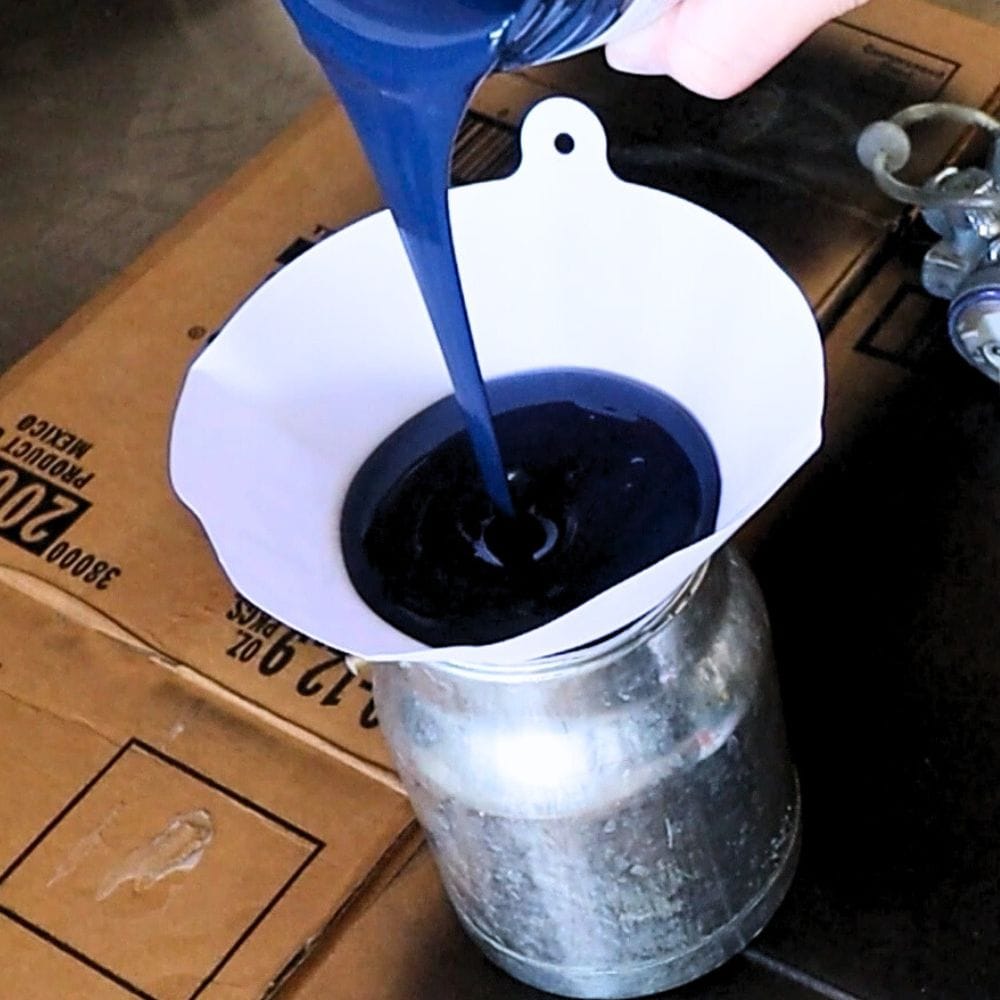
Check out my honest and detailed Country Chic Paint Review here.
Check out the best blue chalk paint for furniture here and get more navy painted furniture and dark blue painted furniture inspiration here.

Apply Glaze over Blue Painted Nightstands
While the base coats dried I created a custom dark glaze of 1 ounce Dark Roast mixed with 4 ounces Clear Glaze. Check out my comparison between glaze vs wax over chalk paint to learn more.
Once it was mixed I added the smallest amount of water, just to thin the glaze down a bit.
I distressed the edges with 220 grit sandpaper, then wiped off any leftover dust with a damp rag. Read this post to learn about the 6 best distressing furniture techniques.
Then I applied a layer of satin top coat to make it easier to work with the glaze. Check out how to glaze over chalk paint here.
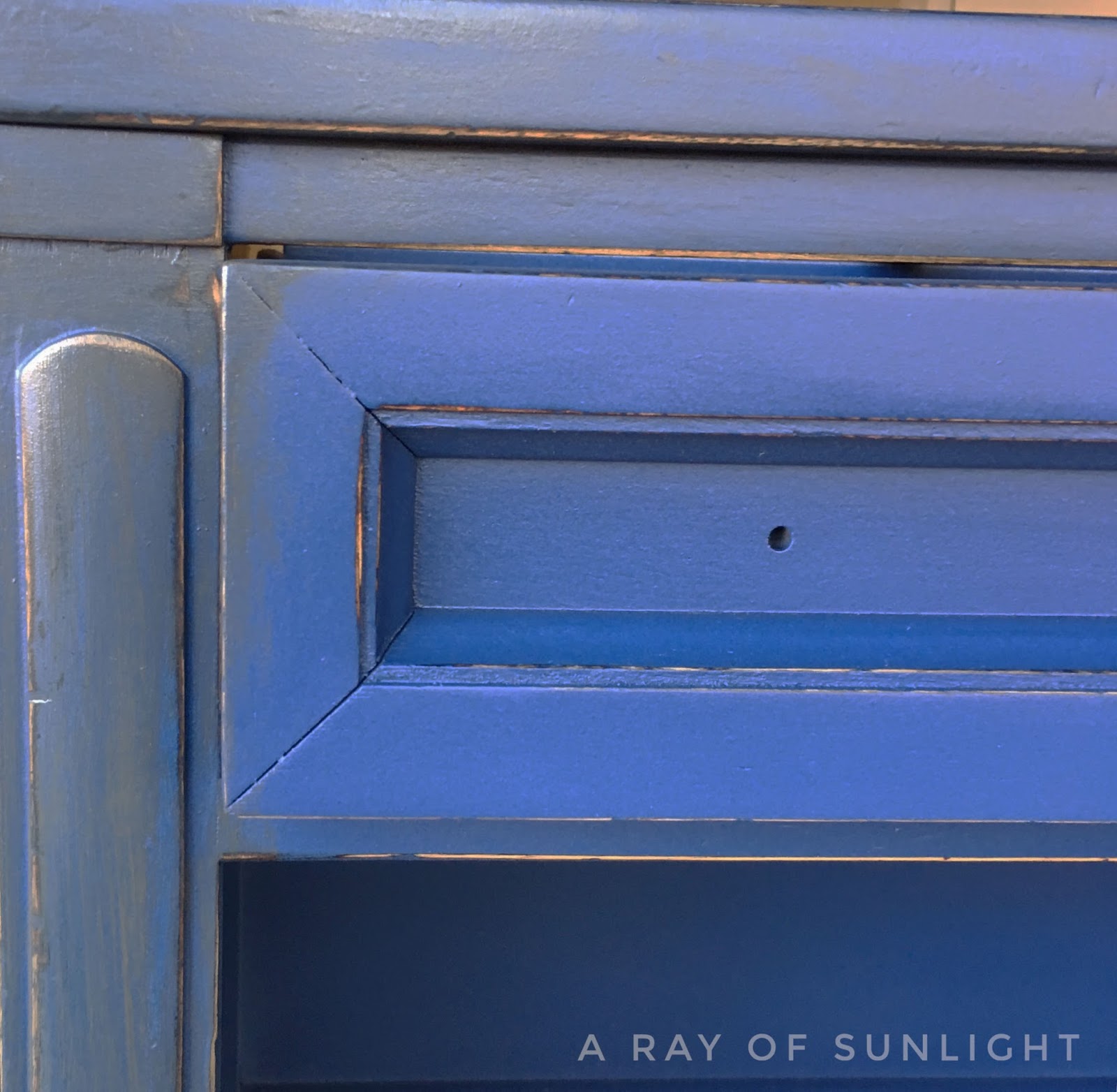
Using a cheap chip brush I lightly brushed on the Dark Roast glaze, making sure to get it into every corner and detail.
When the glaze is watered down ever so slightly it becomes much easier to get a very thin even layer.
Once the glaze started to dry I very lightly wiped it off with a wet lint-free cloth (a cut up old t-shirt works great!) to create a worn feel.
Because we wanted more of a sheen on the nightstands we sealed the glaze with another layer of satin top coat.
Need to SEE how to glaze? Check out this video on how I glaze over chalk paint.
What is the purpose of glazing painted furniture?
Glazing painted furniture is a technique used to enhance the look of a piece and add depth and dimension. It creates an aged or distressed appearance by highlighting the details and creating a worn, vintage feel.
Glaze can also be used to tone down bright colors or create a custom shade on top of a base paint color.
Another purpose of glazing painted furniture is to protect the surface and add durability. When a layer of top coat is applied over the glaze, it seals it into the paint and creates a protective barrier against wear and tear.
This makes glazing a great option for high-traffic areas or pieces that will be frequently used. So not only does glazing add character and style, but it also serves as a practical method of finishing and protecting the painted piece.
Can you apply glaze directly to wood without painting it first?
Yes, you can apply glaze directly to wood without painting it first. This method is often used for stainable wood surfaces such as cabinets or furniture with a natural finish.
The glaze adds depth and dimension to the wood, while still allowing the natural grain to show through. It also helps to highlight any intricate details in the woodwork.
However, if you are using glaze over raw wood, it’s still important to seal the wood with a clear top coat beforehand. This way, the glaze won’t soak in and create an uneven or blotchy look.
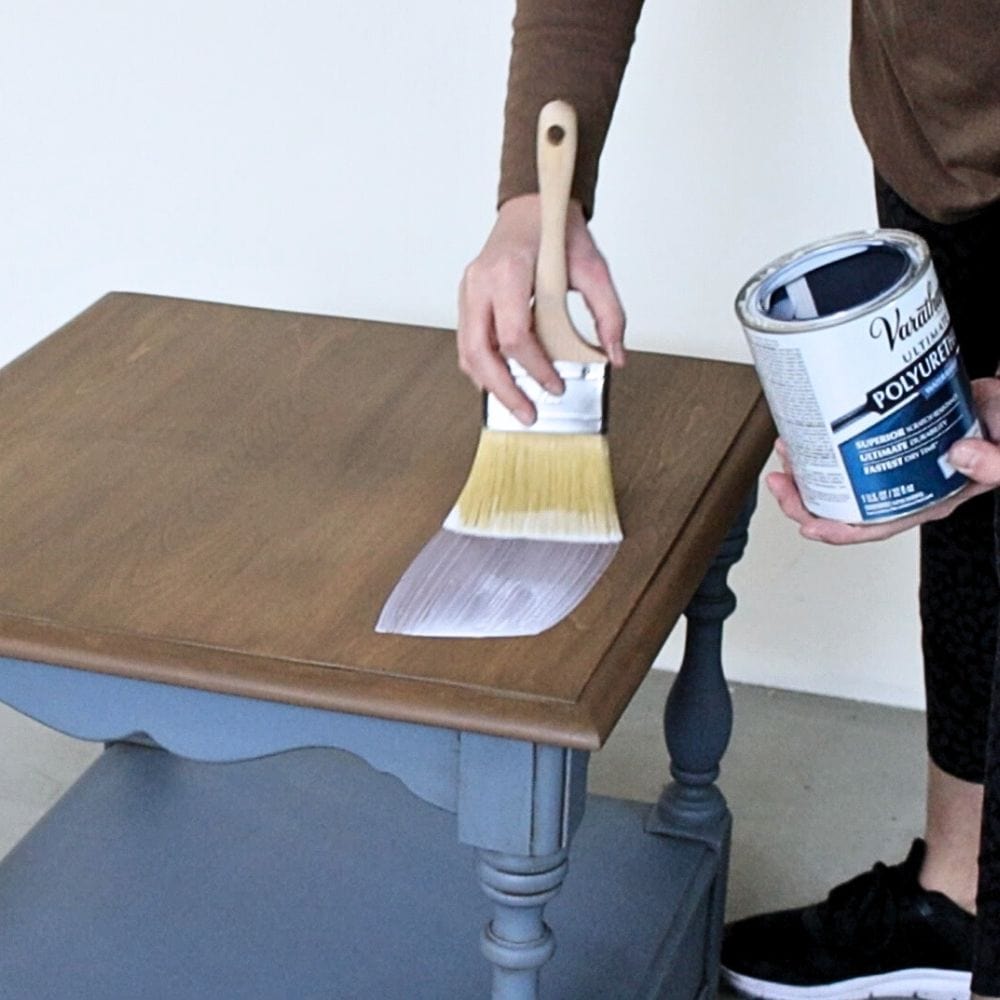
Once the top coat is dry, go ahead and apply the glaze as you like. Just keep in mind that since there’s no base paint color, the final result might be more subtle.
But if you want a natural, rustic vibe, glazing directly onto raw wood is a cool option.
Can you mix different colors of glaze?
Yes, you can mix different colors of glaze to create a custom shade. Just remember to add small amounts at a time and test on a scrap piece of wood or inconspicuous area before applying to your furniture.
It’s also helpful to keep track of the ratios used in case you need to mix more later on.
Another tip is to start with a base color that is similar to the glaze color you want to create. For example, if you want a dark brown glaze, start with a base coat of dark brown paint before adding in your desired tint.
This will help to create a more cohesive and consistent color throughout your piece.
Is glazing necessary for antiquing furniture?
No, glazing is not necessary but it does help create a more authentic aged look. Antiquing involves giving an aged appearance to furniture, and glazing can help enhance this effect by adding depth and dimension to the piece.
If you prefer a simpler method, distressing furniture with sandpaper or using a dark wax can also create an antique effect.
However, using a glaze gives you more control over where the dark color goes and can be wiped off easily to adjust the intensity of the color.
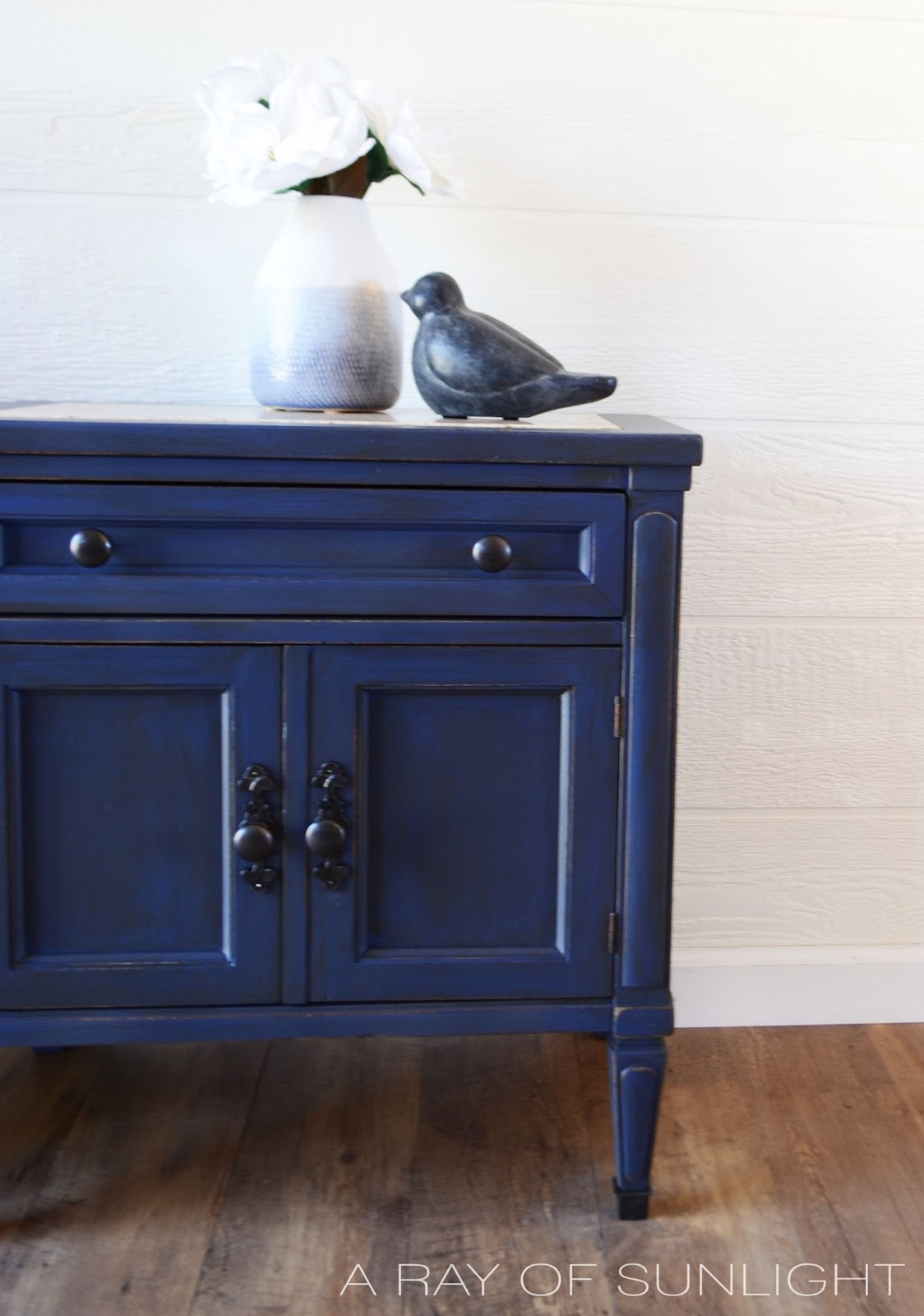
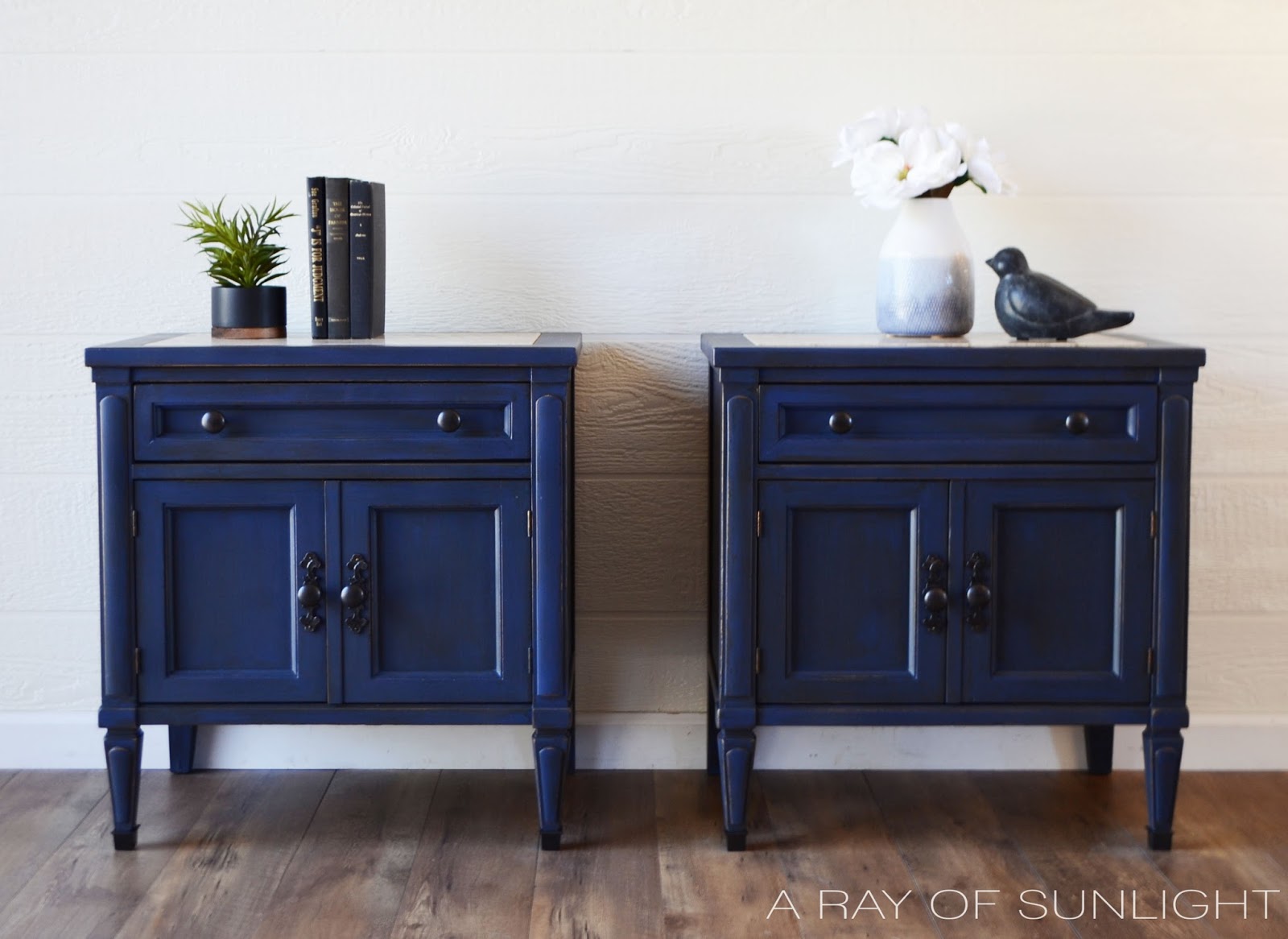
More Before And After Makeovers
Click any of these “before” photos below to view the “after” of that makeover.
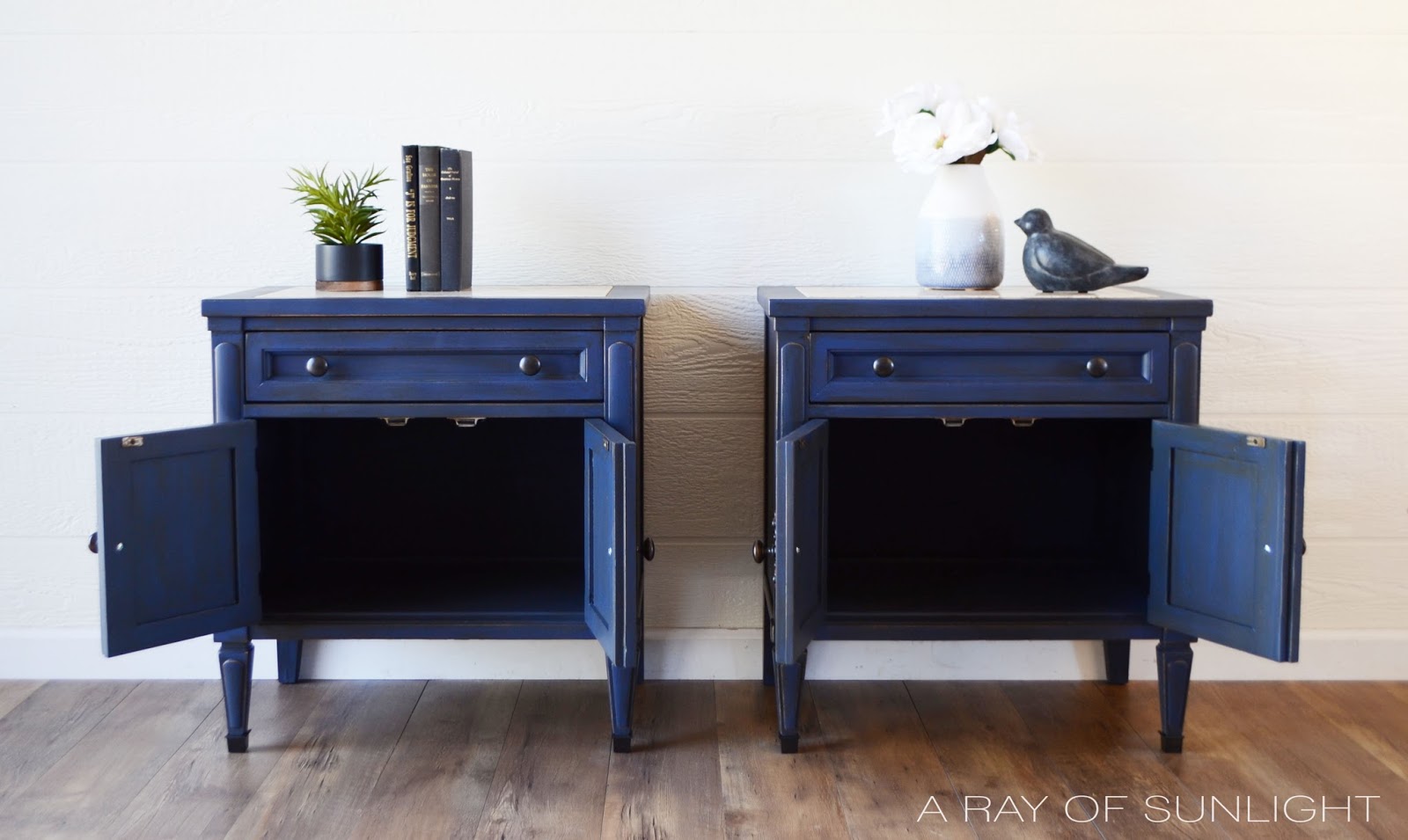
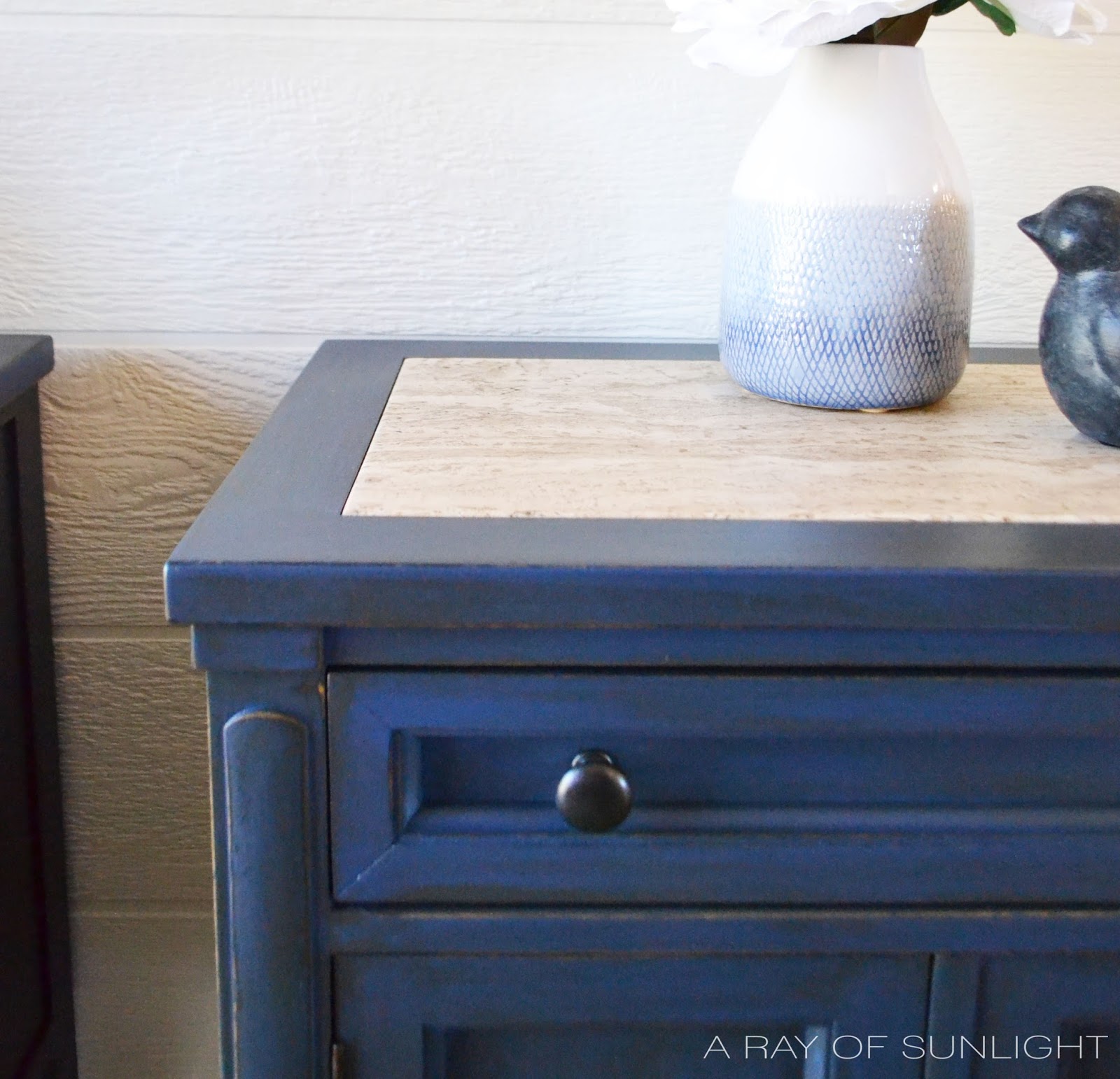
More Nightstand Makeover Ideas
- Repurpose a Desk into Nightstands
- French Provincial Nightstands Makeover
- DIY Dark Green Nightstands
- Pink Painted Nightstand
- DIY Teal Blue Nightstands
Follow us on YouTube to get more tips for painting furniture.
Or share your project with us on our Facebook Group and be part of our community. See you there!




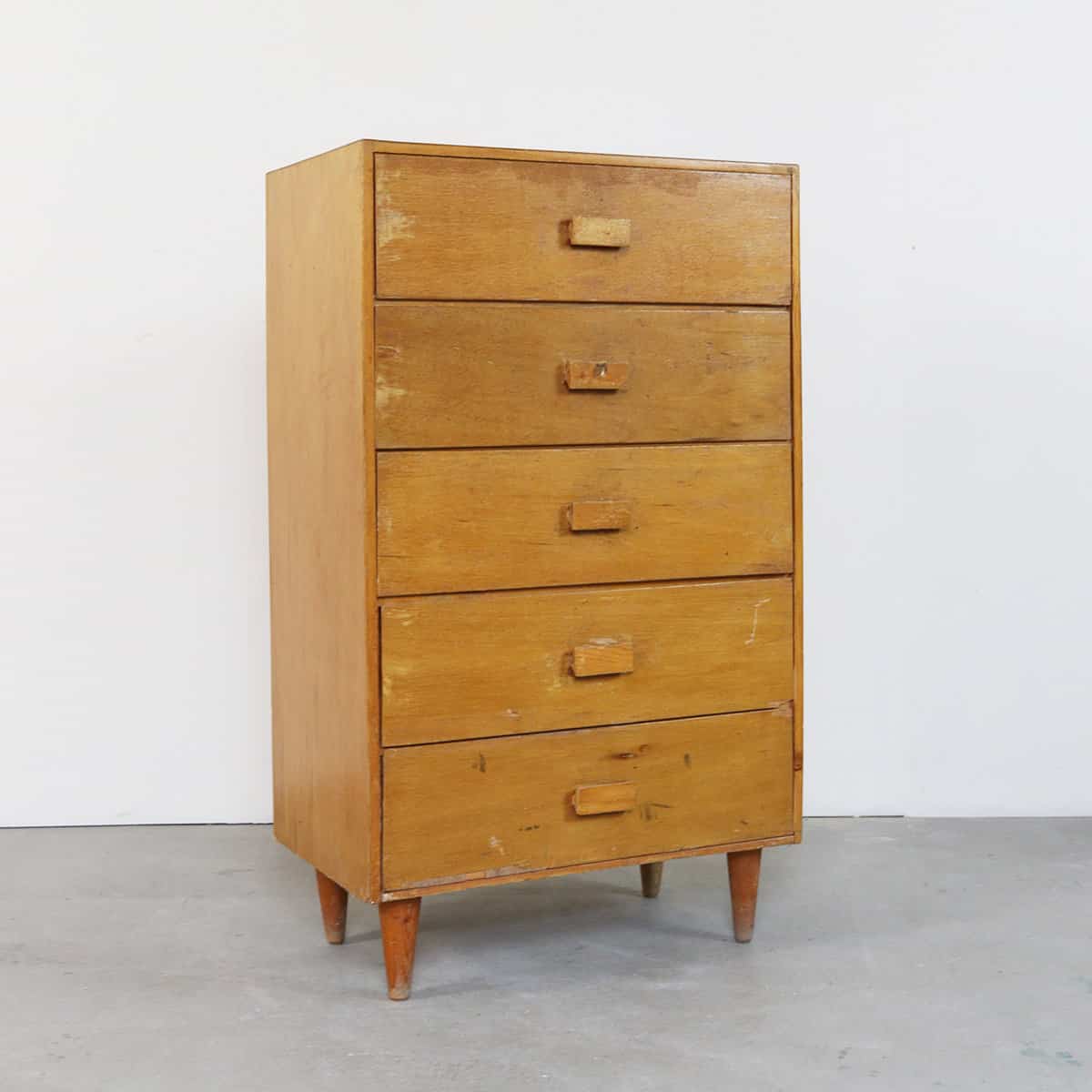
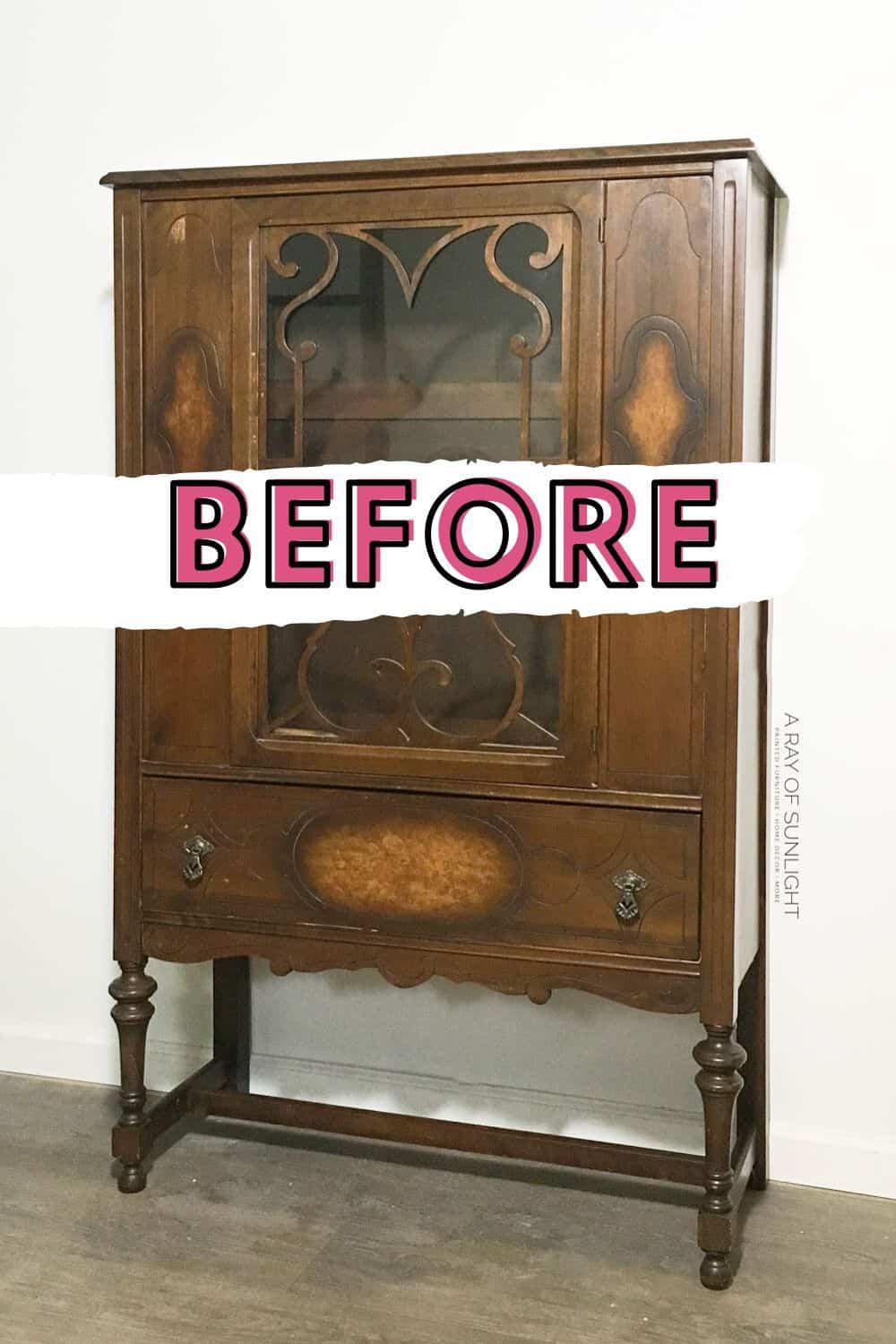
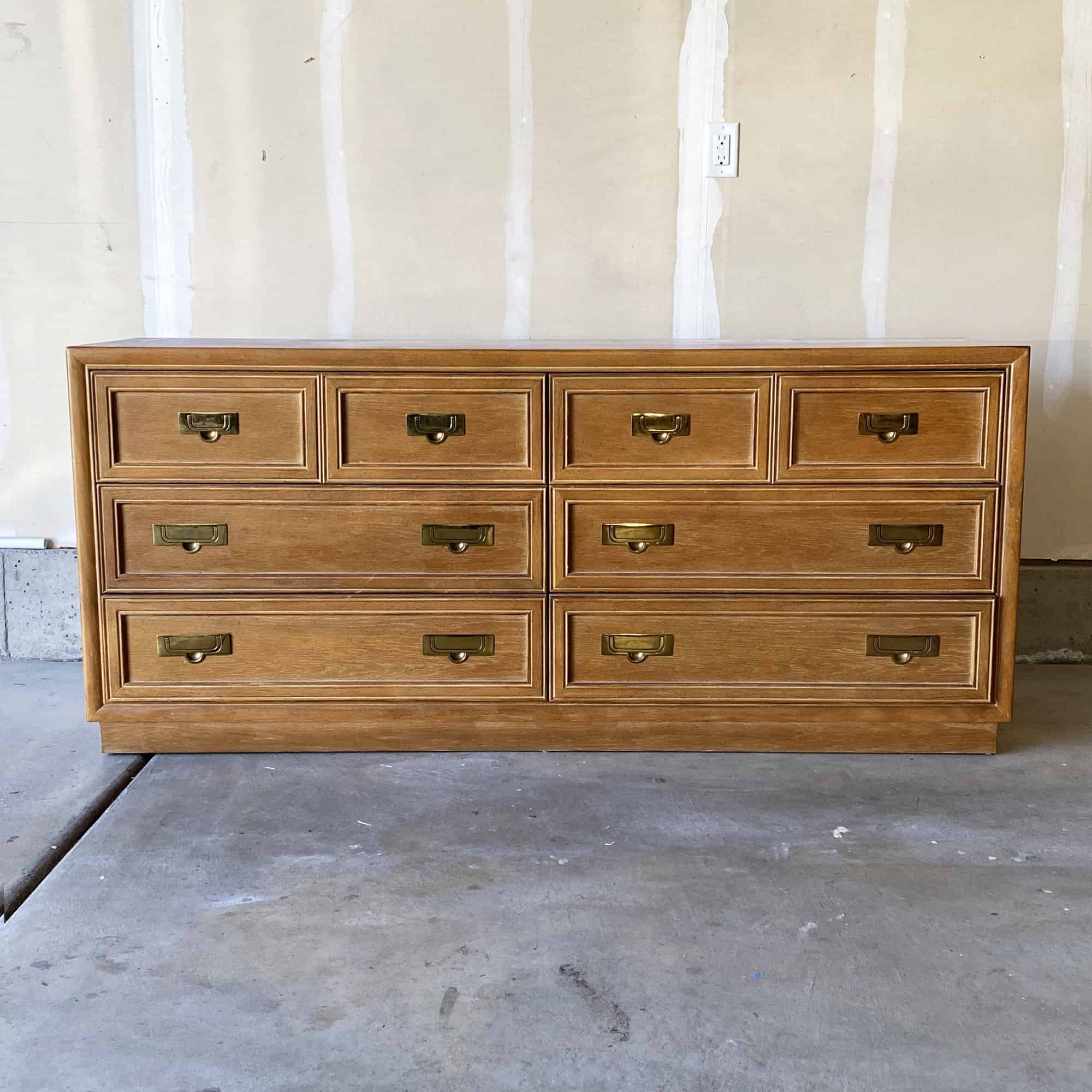

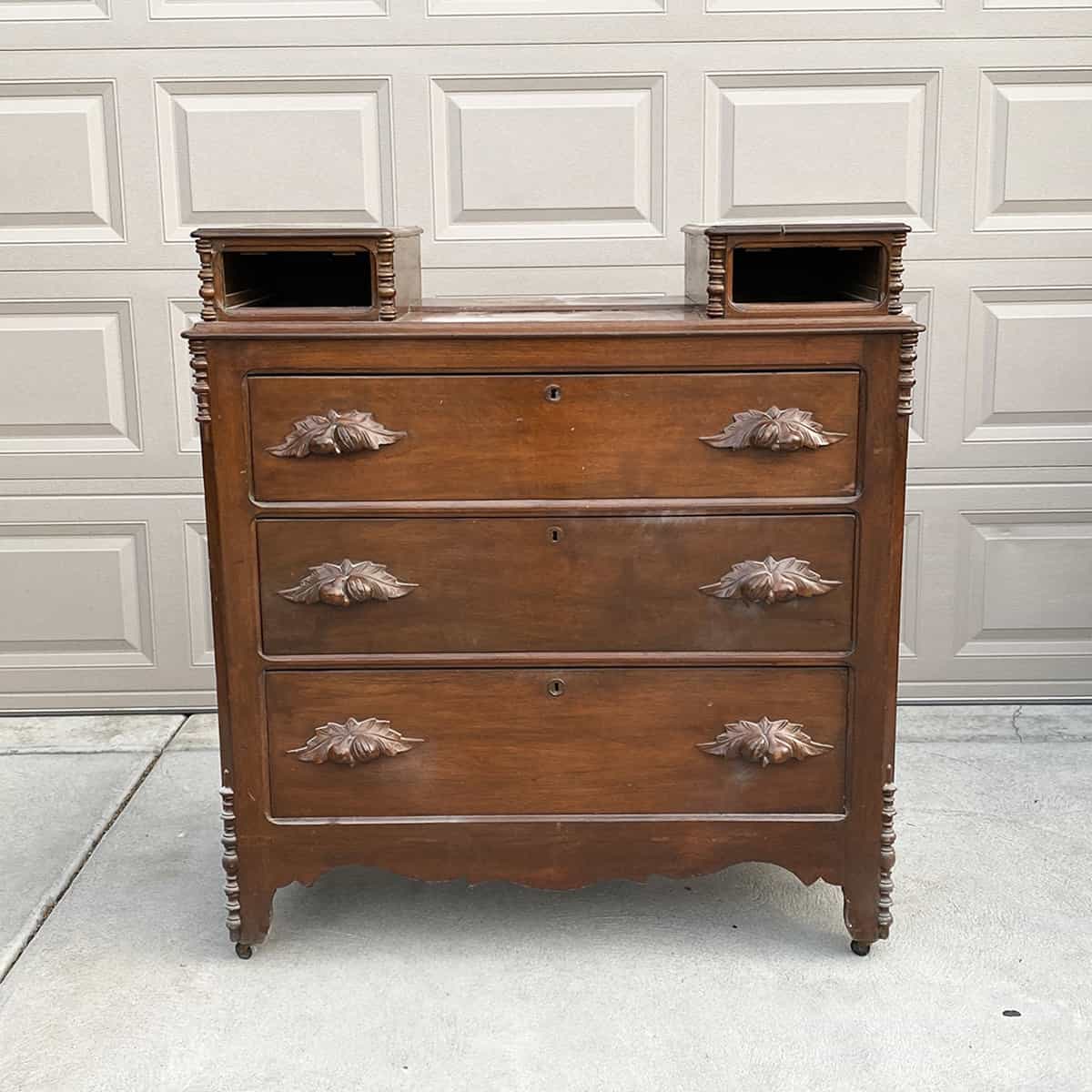

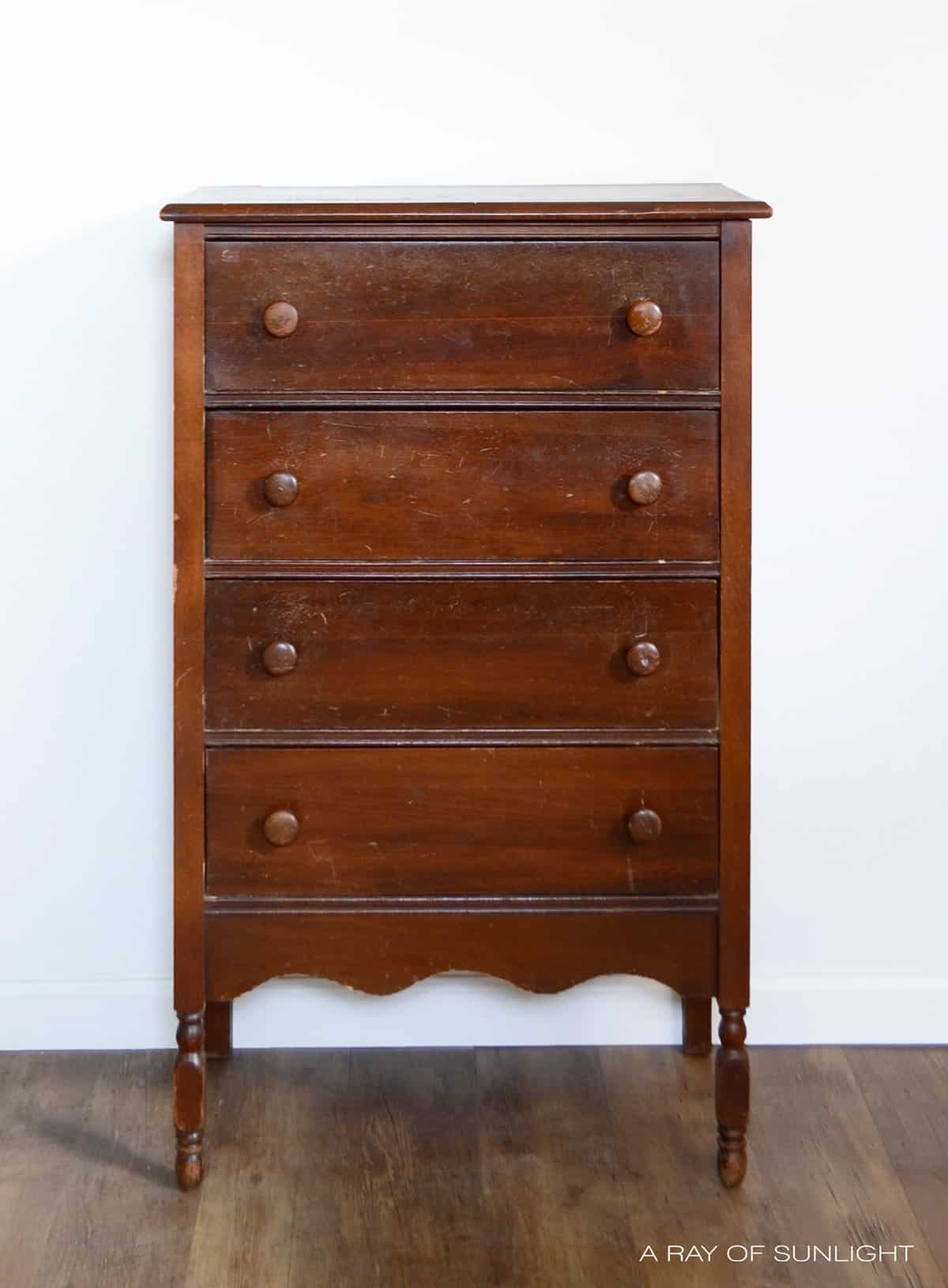
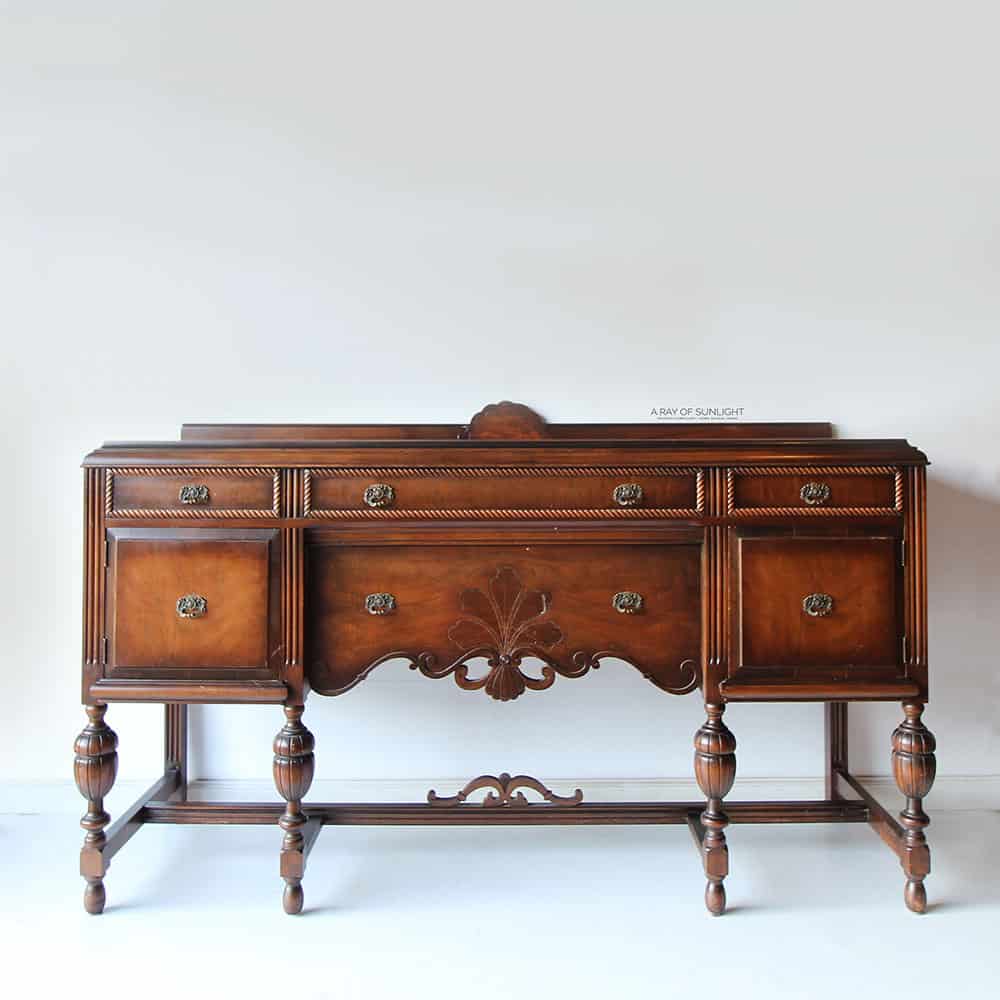

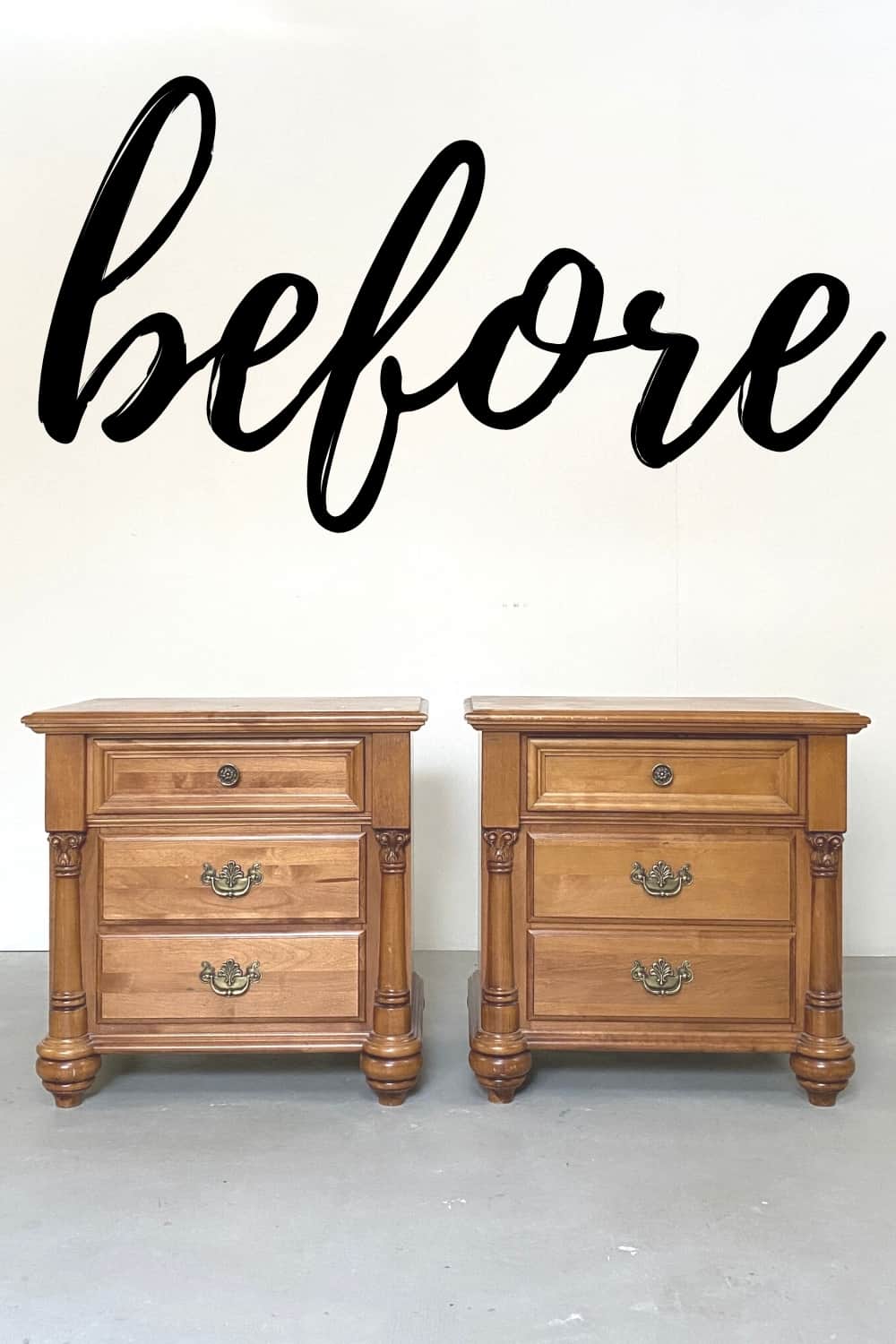






Hello.
I can’t believe I found your post.
It’s almost identical to what I’ve been envisioning in my mind.
I’ve been looking for used wood nightstands, like you found. So far I’m only finding partial wood.
Hey Ali,
Finding specific pieces are always hit or miss. Just keep searching!
Hello,
Thank you for all the great info.
I have a couple of questions. I am just starting out in redoing as an income stream. So I want to understand the why’s behind the choices most upcyclers use.
Why does chalk paint seem to be the popular choice for furniture redoers? Most bands of chalk paint are extremely
expensive. It has a lot of texture and doesn’t always leave a nice smooth, flawless finish. It also has a reuptation for not holding up as well as other options. Seems like using a good quality cabinet paint would be a good choice. When paired with a good quality top coat, that choice is nearly indestructible.
The other question is, why do so many use wax as the finish coat. Based on the information I have found, wax is not a very tough finish. It scratches easily. According to what I have read, its good for pieces that don’t get a lot of wear. But not suitable for tabletops, dresser tops, desk tops or any piece whose top gets a lot of wear, unless there is a lot effort put into layering, curing and polishing.
As I said I am just starting out and want to understand.
In videos the peices always look beautiful and seem to garner a good price.
Chalk paint came around and became popular because it was easier to use. But yes, if done the way that it was marketed, it doesn’t turn out as well as using an enamel paint would. It is also more versatile compared to other paints. If done the way I teach, you can get a professional finish with the chalk paint. But it isn’t the easiest way to paint furniture.
I’m like you with the wax, I can’t understand why people prefer wax, other than it is easier to apply… sometimes.
Don’t worry about what everyone else is doing though, if you want to paint furniture a different way, there is no problem in doing so.
Best of luck!